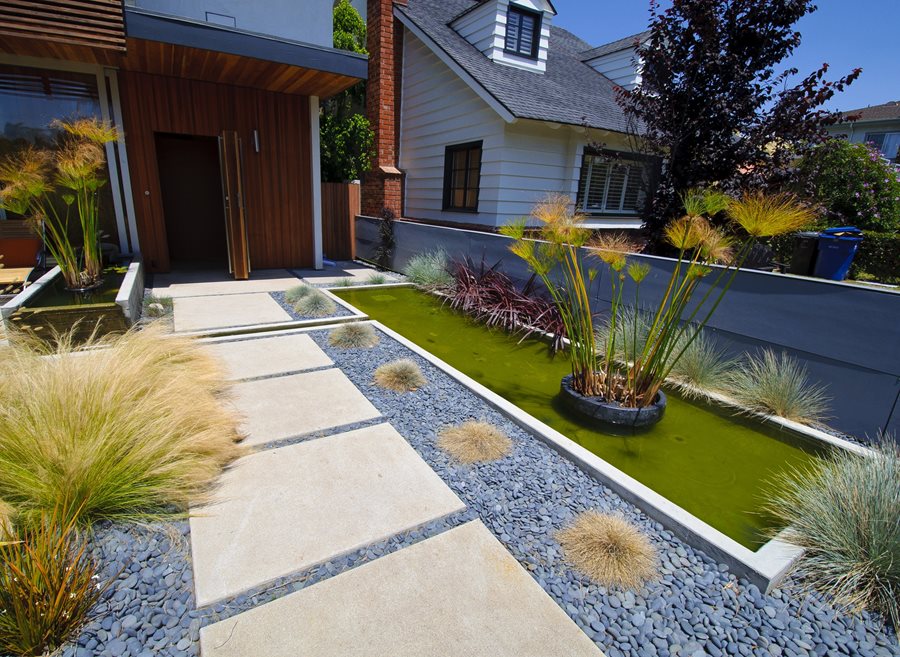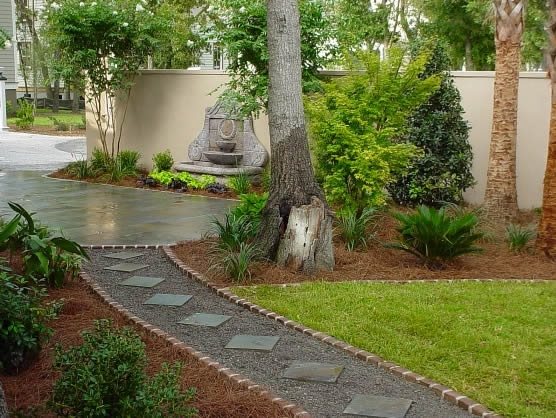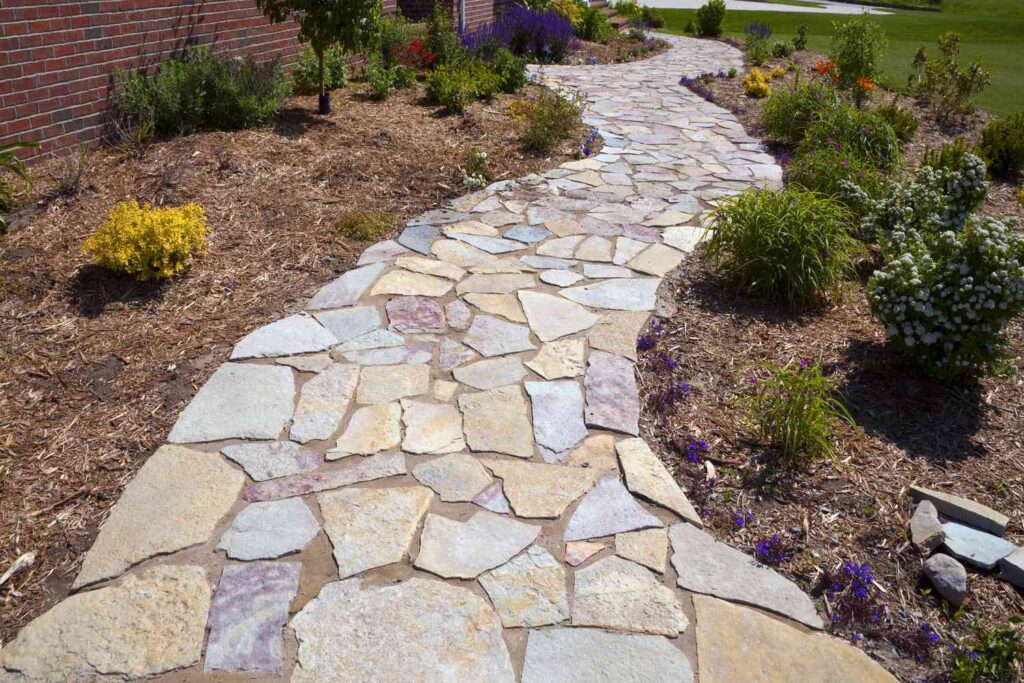There’s nothing more frustrating than watching weeds sprout from every little crack in your sidewalk. They make everything look neglected, and if you’re like me, you probably don’t want to reach for a harsh chemical weed killer every time you spot a green invader. Thankfully, there are a number of natural solutions that are both safe and surprisingly effective.
When I first moved into my home, my front walkway was filled with stubborn little weeds. I started researching natural alternatives, and I quickly realized there were many easy, affordable ways to take care of them without poisoning my soil or harming my pets. Here are 13 tried-and-true natural methods to help you reclaim your sidewalk and keep it looking sharp all year long.
Why Avoid Chemical Weed Killers?
Chemical herbicides might seem convenient, but their side effects can be pretty nasty. Many contain ingredients like glyphosate, which can leach into the soil and affect nearby plants, insects, and even water supplies. If you have a garden close to your walkway, you definitely don’t want chemicals drifting into your prized plants.
Health is another big concern. If you have kids or pets running around your yard, chemical residues can pose a real risk. I remember reading about a dog getting seriously ill after walking across a freshly sprayed sidewalk. That was a big turning point for me.
And finally, chemicals aren’t just harsh on the environment—they can damage your sidewalks too. Over time, repeated applications can break down the surface of concrete or brick, making cracks worse and allowing even more weeds to grow.
13 Ways To Get Rid Of Weeds In Sidewalk Cracks Naturally
1. Boiling Water
One of the simplest and most satisfying ways to kill weeds is by pouring boiling water directly into the cracks. It sounds too easy, but it really works. The heat instantly destroys the weed’s cell structure, causing it to wilt and die within hours.
When I first tried this, I used a kettle with a long spout to get the water exactly where I wanted it. Within a day, those stubborn little weeds were completely gone. It felt great knowing I hadn’t added anything harmful to the soil or nearby grass.
This method is best for small patches or a few isolated weeds. It doesn’t prevent them from coming back forever, but it’s a fantastic short-term fix when you’re in a pinch.
2. Vinegar Solution
White vinegar is a natural powerhouse when it comes to weed control. The acetic acid in vinegar draws moisture from the plant, drying it out and killing it within a day or two. For extra punch, you can mix in salt and a few drops of dish soap to help the solution stick to the leaves.
I keep a spray bottle of vinegar solution on hand for quick weed attacks. It’s especially effective on hot, sunny days. I’ll admit, the smell is strong at first, but it dissipates quickly and doesn’t leave any harmful residue.
One caution: vinegar is non-selective, meaning it will kill any plant it touches. Be careful when spraying near grass or flowers you want to keep alive!

3. Baking Soda
If you want a completely dry, mess-free option, baking soda is the way to go. Just sprinkle a generous amount directly into sidewalk cracks. The sodium content messes with the weed’s internal systems and keeps new growth at bay.
I first tried this after a neighbor recommended it. I was skeptical at first, but it worked surprisingly well. I noticed fewer weeds returning in those treated areas over the next few weeks.
It’s also a great choice if you want something that doubles as an insect repellent. Just don’t overdo it—too much baking soda can affect nearby plants and soil health.
4. Salt
Plain old table salt is another effective weed killer. It works by dehydrating the plant and disrupting its internal water balance. I usually mix a teaspoon or two of salt into a cup of warm water and pour it directly into cracks.
Salt is powerful, but you have to be careful with it. I learned the hard way that too much salt can make the surrounding soil barren for months. Now, I only use it for cracks far from my garden beds or lawn.
If used sparingly, it’s a cheap and effective way to keep those cracks weed-free. It’s especially handy in the heat of summer when the sun can help amplify the salt’s effects.
5. Manual Pulling
Sometimes the old-fashioned way really is best. Pulling weeds by hand is time-consuming, but it guarantees you’re removing the entire root, which helps prevent regrowth.
I usually wait until after a rainfall, when the soil is softer and weeds come up more easily. A narrow tool like a screwdriver or weeding knife can help dig out deep roots.
It’s a good opportunity to get outside and spend a few mindful minutes with your landscape. Plus, there’s a certain satisfaction in physically removing a stubborn weed with your own hands.
6. Flame Weeder
A flame weeder is a propane-powered tool that lets you zap weeds with a burst of high heat. It sounds intense, but it’s actually pretty easy to use and surprisingly precise.
I bought a small hand-held flame weeder last summer, and it’s become my favorite way to tackle large weed clusters in sidewalk cracks. A quick pass over the weed causes the cells to rupture, and the plant dies off within a day.
You do have to be careful—keep water nearby and avoid using it on windy or overly dry days. But if used responsibly, it’s one of the fastest natural options available.

7. Corn Gluten Meal
Corn gluten meal is a natural byproduct of corn processing, and it’s often used as a pre-emergent weed preventer. It works by preventing weed seeds from germinating in the first place.
I apply it every spring and fall around my sidewalks and garden edges. It doesn’t do much for weeds that are already growing, but it has definitely reduced how many pop up over time.
Just be patient—it takes a few applications to see noticeable results. But for a long-term solution, it’s a smart addition to your weed-fighting arsenal.
8. Lemon Juice
Lemon juice is another natural acid that works similarly to vinegar. It burns the weed leaves and dries them out fast. I love this option because it’s completely natural and smells way better than vinegar.
I keep a small squeeze bottle of lemon juice in the fridge, and when I see a few weeds poking through, I squirt a little directly onto the leaves. The best time to do this is on a hot sunny day when the acid has a better chance of soaking in.
It doesn’t always kill the roots, but it’s great for quick control and works best on smaller, shallow-rooted weeds.
9. Mulch or Sand
Filling sidewalk cracks with mulch or polymeric sand can block sunlight and prevent weeds from growing in the first place. It also gives your sidewalk a cleaner, more finished look.
I started doing this with the large gaps in my patio and haven’t seen a single weed all season. Polymeric sand hardens when wet, making it even more effective at sealing out future invaders.
Just make sure the area is weed-free before you fill it in, or you might end up trapping a healthy weed underground!
10. Pressure Washing
A good pressure washer can blast away weeds, dirt, moss, and everything else lurking in your sidewalk cracks. It’s loud and messy, but oh-so-satisfying.
I borrowed a neighbor’s power washer last year and was blown away by how much grime and weed matter it removed. Just be careful not to damage the concrete by using too high of a setting.
Once you’ve cleaned everything out, it’s a great time to follow up with a preventative like sand or baking soda to keep new weeds from coming back.

11. Rubbing Alcohol Spray
Rubbing alcohol might seem like an odd choice, but it works really well on small weeds. It dries out the leaves and causes the plant to wither away.
I mix one part rubbing alcohol with two parts water in a spray bottle and keep it in my garage. It’s perfect for spot-treating the cracks along the edge of my driveway.
It’s also safe for pets and people once it dries, and it evaporates quickly without leaving a residue.
12. Cover With Cardboard or Newspaper
This method is great for sections of sidewalk or patio you don’t use every day. Simply cover the cracks with cardboard or newspaper, then weigh them down with bricks or pots.
After a couple of weeks, the lack of sunlight and air will suffocate the weeds underneath. When you remove the cover, you can sweep away the dead growth and refill the cracks.
I used this trick when I went on vacation for two weeks. I came back to a patio that looked nearly weed-free—and all I had to do was recycle some boxes!
13. Plant-Friendly Crack Fillers
Sometimes the best way to keep weeds out is to crowd them out. You can fill larger sidewalk cracks with low-growing ground covers like creeping thyme or moss.
I planted some creeping thyme between the flagstones in my garden path, and not only has it prevented weeds, but it also looks amazing and smells great when I walk on it.
This method takes a little time and planning, but it’s a beautiful way to make your sidewalk both functional and charming.
Wrapping Up
Keeping weeds out of sidewalk cracks doesn’t have to involve harmful chemicals. With a little effort and the right natural approach, you can keep your walkways clean, safe, and attractive.
Try out a few of these methods and see which ones work best for your space. Whether you prefer quick fixes like boiling water or long-term solutions like plant-friendly fillers, there’s something here for everyone.
Have a favorite natural weed remedy that works wonders for you? Share it in the comments or tag us in your before-and-after photos—we’d love to see your results!

